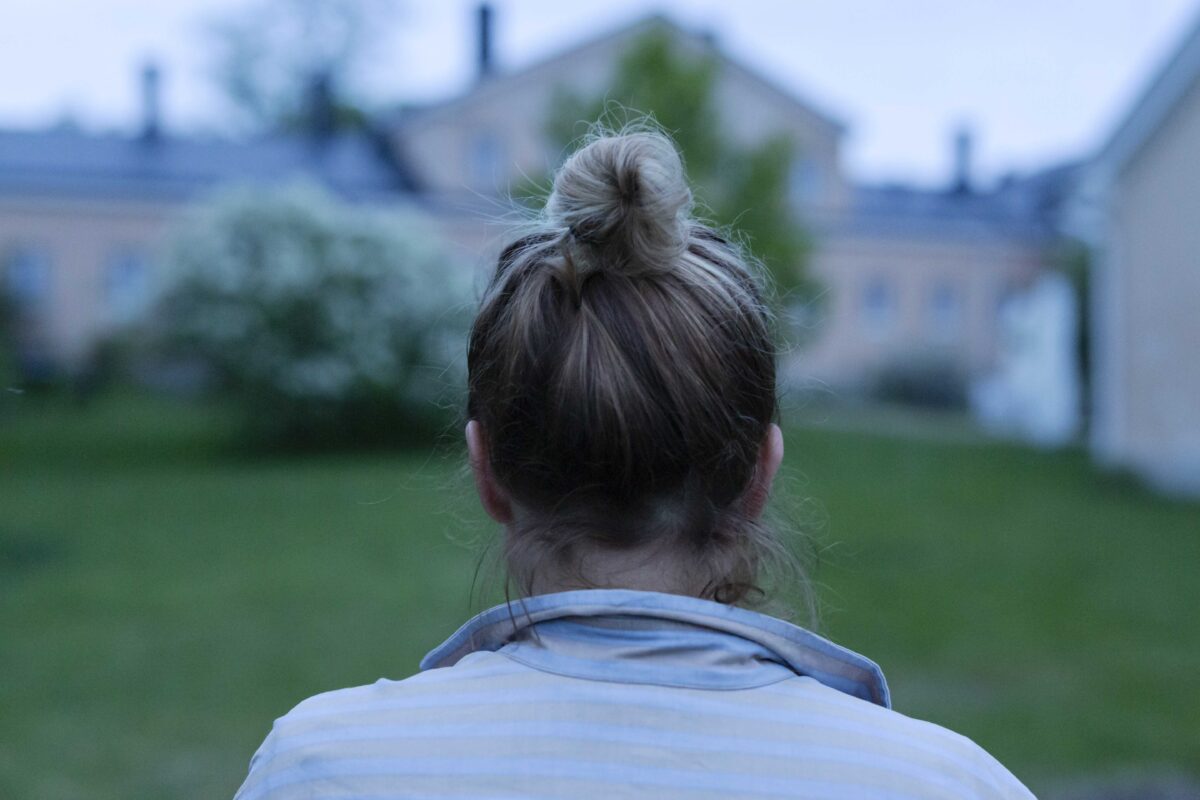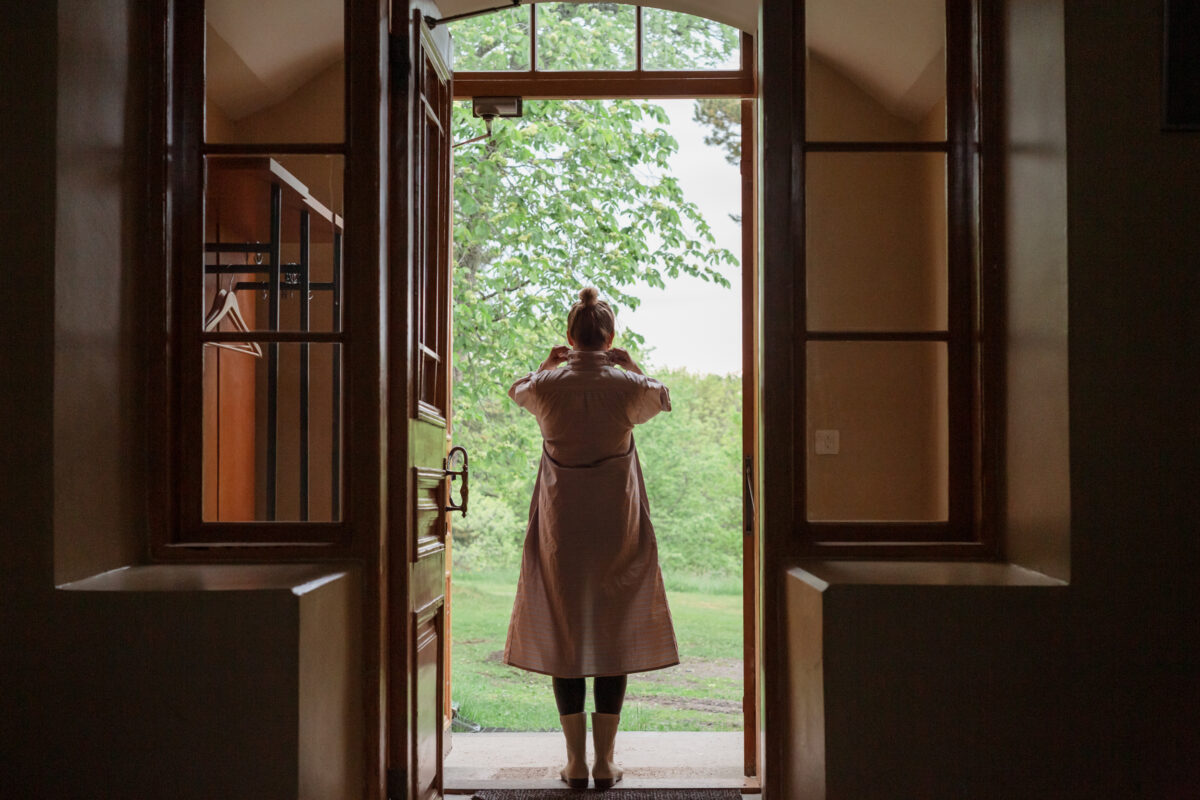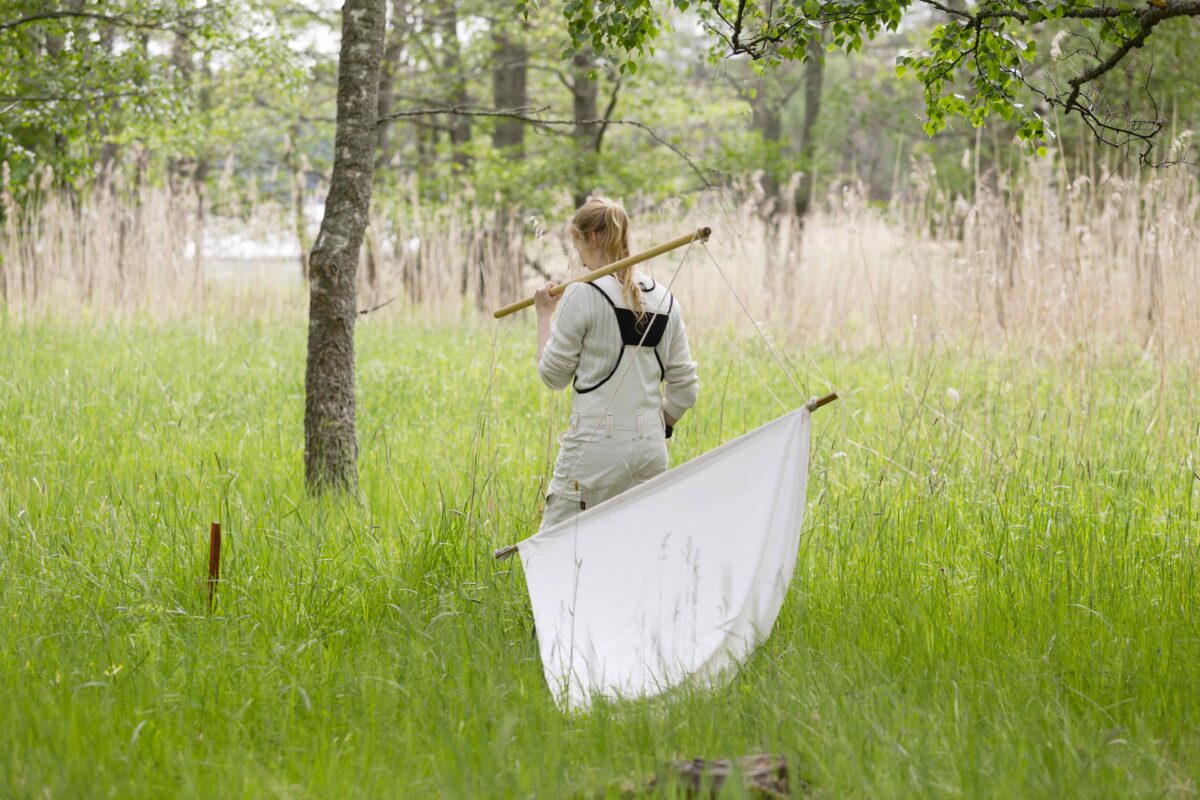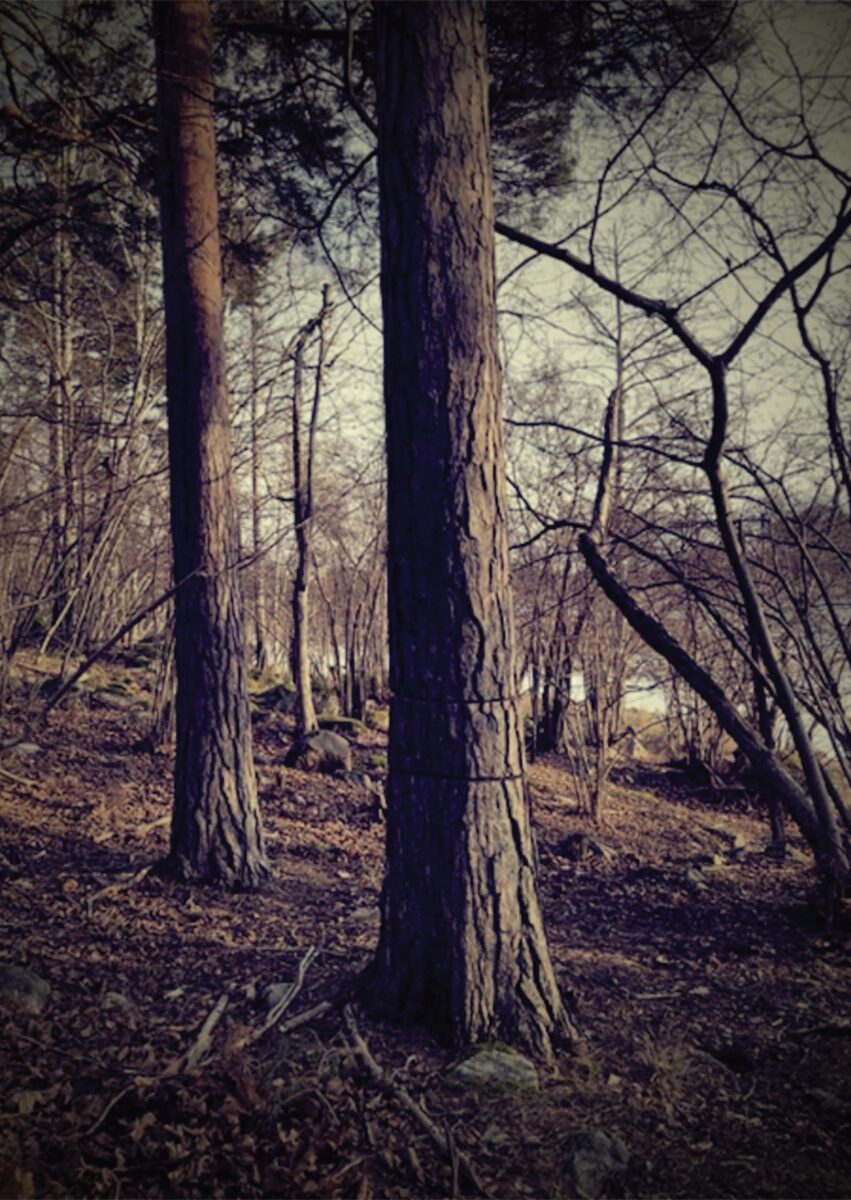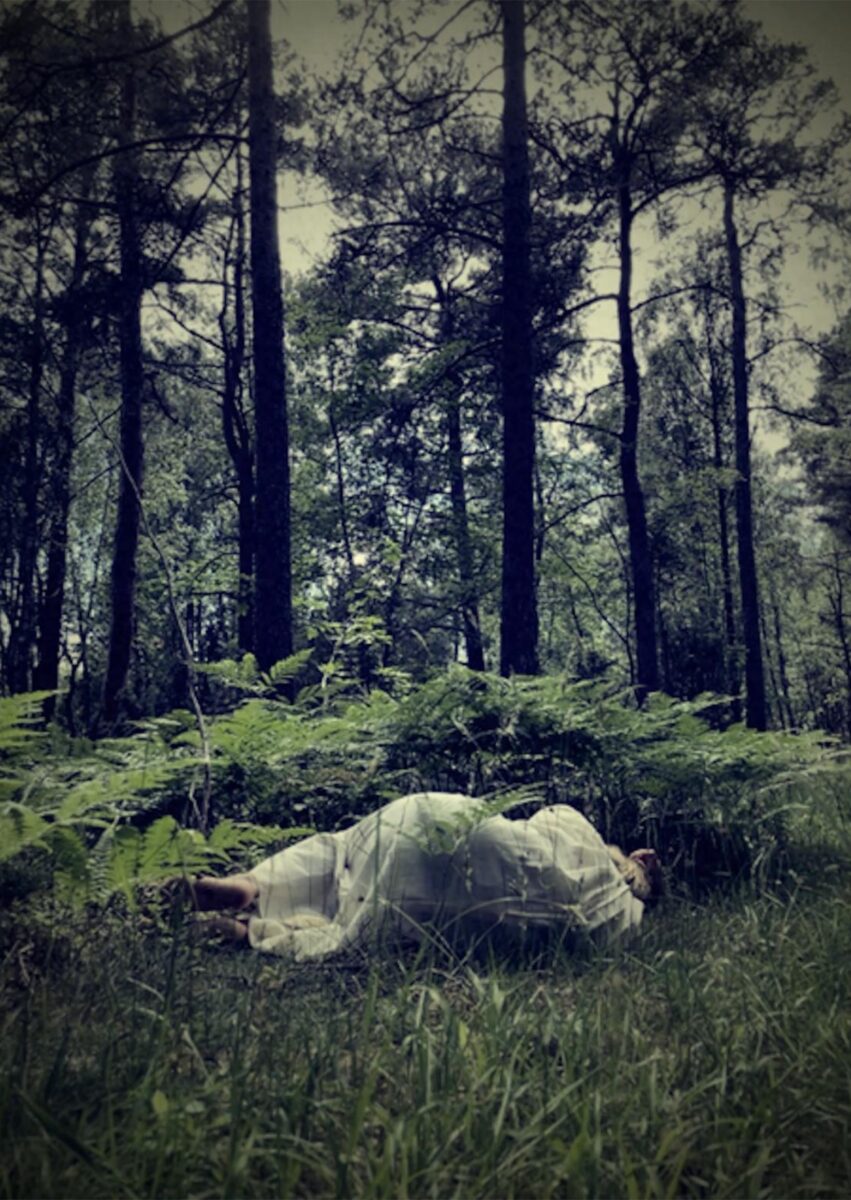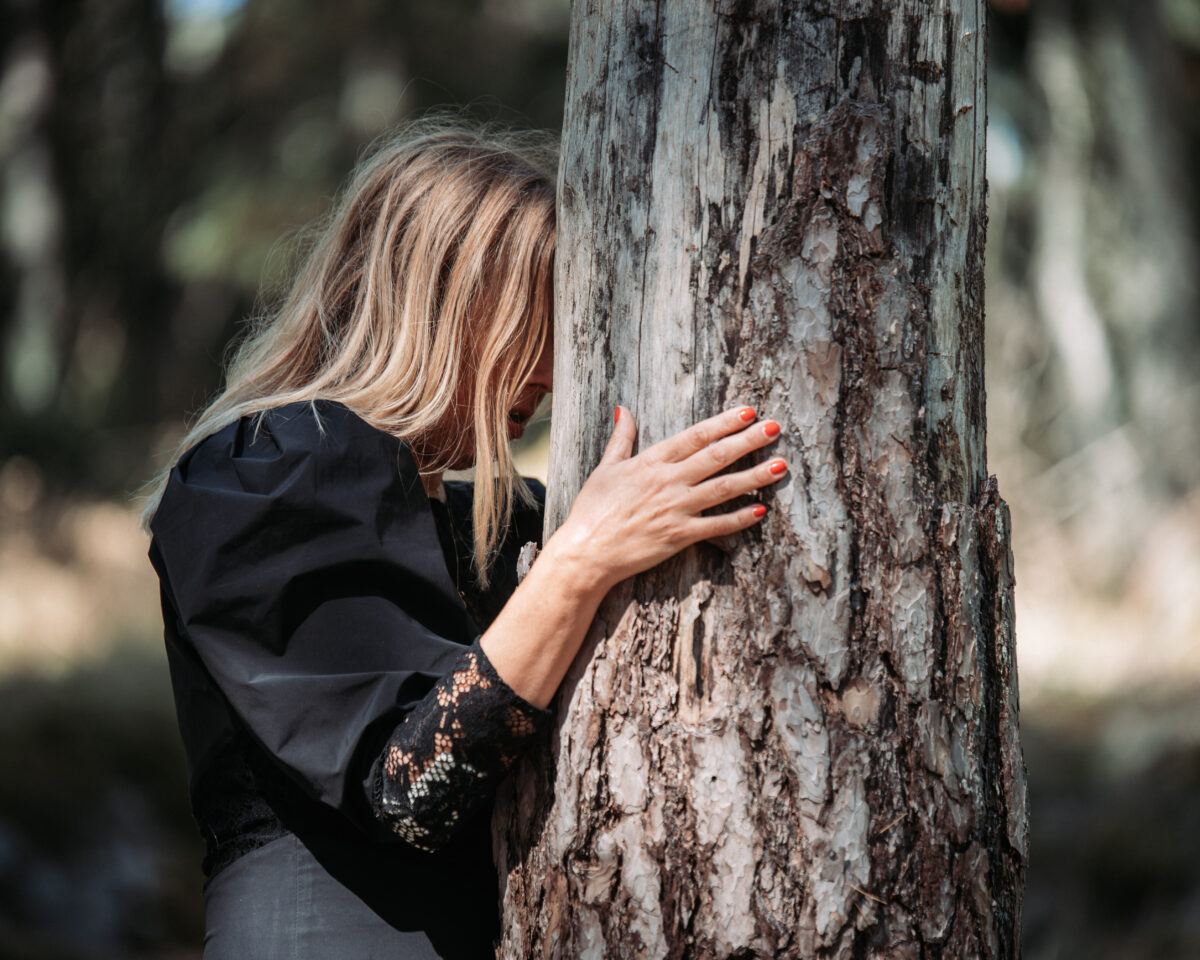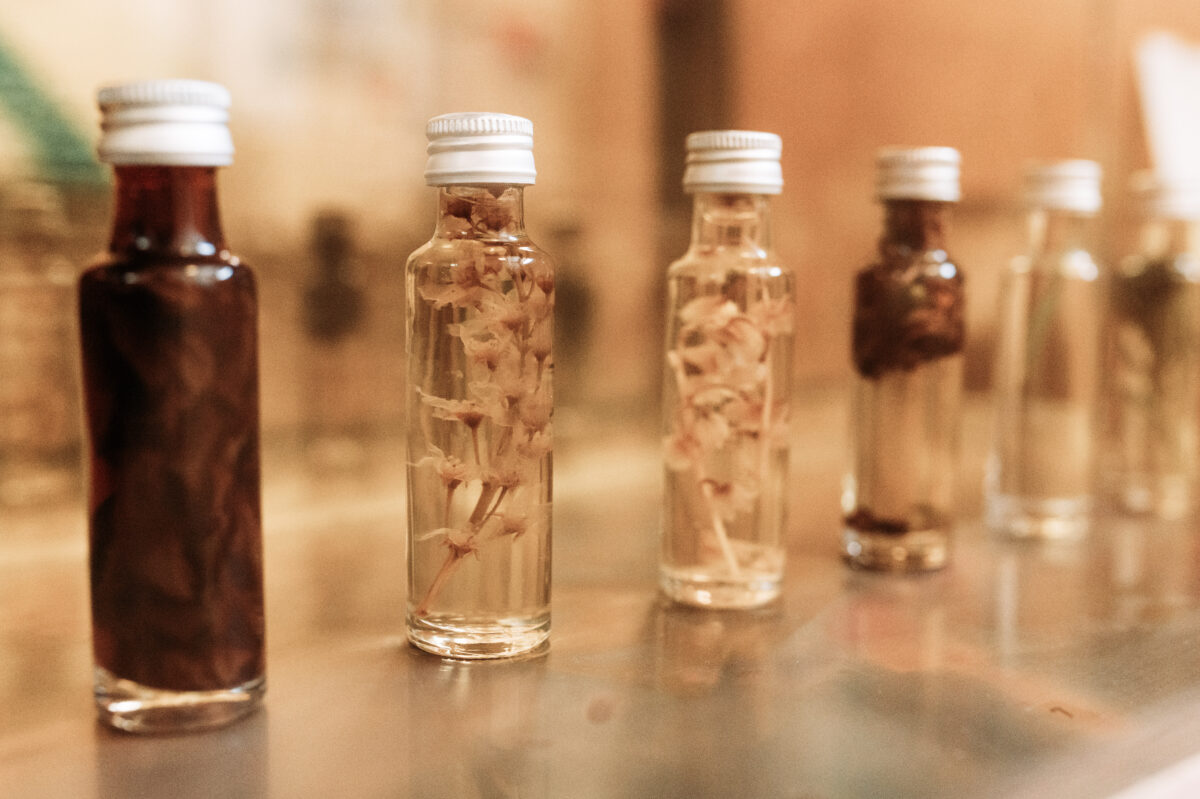Interview with CAA co-founder, artist and filmmaker Lotta Petronella
Lotta Petronella’s relationship with islands spans multiple decades, narratives and geographies. Following a period abroad, the artist and filmmaker returned to the Turku archipelago – the place of her childhood – to direct and shoot Skärikvinnor, a short film which follows the stories of four women living and working with the elements on the archipelago’s outer islands. In recent years, Petronella has turned her focus – as an artist, documentary filmmaker and co-founder of Contemporary Art Archipelago – towards the island of Seili in a bid to unveil the structures of power that haunt this complex and layered landscape.
In this interview, Petronella speaks about her journey through the archipelago and her transitioning artistic and filmic practice that brings people, places and plants into dialogue with one another. Her award-winning documentary film, Själö – The Island of Souls, premiered in spring 2020, and last summer she launched her critical feminist herbarium, Själö Poiesis. Petronella was a commissioned artist in this year’s Helsinki Biennial. Her exhibition Materia Medica of Islands was installed on Vallisaari island until 17 September 2023, where she also performed Laments along with Lau Nau and a live choir.
This interview was conducted on Seili island in early August 2022.
CAA: You have worked with/in and amongst the Turku archipelago for numerous years. What brought you, and continues to draw you, to converse with this place?
Lotta Petronella: It started with my film Skärikvinnor (2005-2008) located on the outer islands of the Turku archipelago. As part of the project, I visited four small islands and conversed with four women living and working there. They are people whose roots with these islands run deep: they have a certain indigeneity to the landscape. I spent time interviewing the women including a widow whose husband, a fisherman, had drowned at sea, while also beginning my engagement with Seili through an interview with the former hospital’s last cook, Signe Erfors. When I started working with these women I had recently moved from London, my home for 15 years, back to Finland. I was young and had exhausted myself overworking: I broke down, fully. Taking into account my own condition, these women and this work was like a lifeline.
While I have known these islands since I was young, I knew them superficially and, as an adult, spent only my summers here. Swedish, my mother tongue and the predominant language on many of these islands, provided me with a way to reacquaint myself with the archipelago. What really touched me during this work, what I really learnt from these women, was the connection that they had to the place: it wasn’t something sentimental nor romantic, neither was it a thing you could document nor ‘have.’ I was already heavily influenced by the work of Trinh T. Minh-ha and had been asking myself, from a documentary filmmaker’s perspective, how do you present the life of the other? I soon realised that in being allowed to be beside them – living and working alongside these women – I was neither them nor merely observing them. I began to ask how does one create a connection with this place? by engaging with practical activities like hauling the nets with the fisherman’s widow who, I came to understand, became a fisherman as a means of survival but also to preserve some kind of connection with her former husband. These women have to know a lot of practical things; they know how to because they have to: to be an islander you need a kind of strength and to be a doer, but you also need to realise that you can’t survive alone. You are on one island, but there is another island nearby with which you are also connected.
I slowly started to change my own life and asked myself: who am I, where am I from? I’m not talking about familial roots but rather how to be within yourself. That was the way I was introduced to these islands. It has this personal story, and that is important. Sometimes when something happens in your life, you need to rebuild. You start looking at the structure of things – even the structure of a documentary filmmaker and of being the observer. How do I tell and what do I tell? What is my right to be here, and from what perspective? Somehow, the islands created a logic that became part of how I now think and operate. My latest discovery when working with geologists in the archipelago was realising that islands are not isolated nor separated: what we see is just their peak; beneath the surface, these islands are connected. I have come to know these islands through the people and the earth; the memories and the plant-life.
CAA: How has your longstanding relationship with the archipelago and its communities, impacted your approaches to documentary filmmaking?
LP: Skärikvinnor was very classical in its documentary filmmaking: I followed these women for a year, and I made it in four parts in accordance with the seasons. It was one of the first contemporary films set in the archipelago, and it was very different to the practice I had done as an artist prior to then. For me, it was a means to survive: I held onto it and the process of following their journey. I realised the importance of returning – the slowness of it and the information that you can gather from being with a person. But what information? What do you need to know about a person? Through the project I came to realise my position as a filmmaker, and it follows something that Minh-ha says: “I don’t tend to speak about, I tend to speak nearby”. This gave me a compass for how to be present without intruding or representing while recognising the knowledge that I have and don’t have, as well as acknowledging the authority that I have in holding the camera. People and places show their complexity with time. There is no way you’ll be able to read them just like that. This process gives you a humbleness and humility; it gives you time.
In my work on Seili, I took the time, did a lot of research and learnt a lot. This work isn’t about trying to undo the histories gathered but rather allowing certain knowledges to sink into another depth by changing the way you enter. Recently, I’ve been sleeping with different plants on Seili: I lie down on the earth and try to feel the life that is underneath it. There is some information that comes through a different consciousness: you can allow your body to record something, and begin to read the knowledge that is already inside you. This morning I sat together with Jasmin Inkinen, a biologist working at the Archipelago Research Institute, and Devil’s wheat (Melampyrum arvense), a plant that has been protected since the 1960s but previously classed as a weed and pulled from the earth. Together we spoke about existing structures of power, and while you cannot erase what you know by looking at it, looking at what grows around it – that’s the journey. I’m becoming increasingly interested in strong, embodied knowledge, as well as performance as a means to interact, connect and expose certain things. You cannot read or be in Seili without recognising the structures of power that have been (or are) in force: the hunting of seals; the establishment of the church; the mental institution that becomes a women’s asylum that becomes the forestry institute that becomes the hotel and restaurant.
People in places have been what my work has been about. The place has always reflected the essence of that person (or plant). Now on Seili, I’m making an imaginary apothecary with environmental essences, and asking the question of how do you archive the essence of a place? This work considers how can you encounter the spirit of, for example, the island’s girdled trees – a group of pine girdled by Metsähallitus in its bid to change the forest into the deciduous groves that used to cover these islands. Girdling is a process of slowly killing the trees upright; I’ve documented 160 girdled trees in the last two years. This process of marking, othering and holding has already been done with aspen trees which were eradicated from the island in 2016. They were originally planted on Seili as part of an experiment to grow commercial forests in the 1960s, but were subsequently girdled, sterilised, because of the impact of their roots. Through this work, I became interested in the haunting in the language used by biologists to describe flora that they do not class as being part of the island’s landscape and biodiversity: there is an undertone of the medical and observational language used to categorise those incarcerated in Seili’s former hospital.
CAA: Your film, Själö – The Island of Souls (2020), is set on Seili. Could you talk a little about what the film seeks to communicate and inspire in contemporary audiences?
LP: With Själö I was interested in connecting different historical layers, while recognising that it was not a historical film in any way. It’s more about recognising the spaces of ‘holding’ or ‘detention’, and their associated markings. What interested me the most was the idea of the haunting and the ghostly matters that draw us closer to a certain knowledge. I’ve been thinking about the terms ‘ghosting’ and ‘ghost’. The way I see it is that the ghost is not the women who were incarcerated, but rather the system – that’s the haunting. It’s also important to recognise that this haunting is still active, and it becomes more active the less we recognise it and the less it surfaces. This is where the notion of ‘naming’ things becomes important. I’m influenced by the writings of medical historian Karin Johannisson and her book on diagnoses. Prior to reading her work, I had been against naming things, but now I see the value in naming. For example, naming the plants that I have slept with – and these might be made-up names, common names, or scientific ones – helps me to recognise their ‘face’ (as I would a human’s) in all seasons.
CAA: In Själö, as well as in your wider practice, we experience the convergence of different epochs. What can one learn from bringing the past into the present, the present into the future etc.? What is the potential in overlapping the multifaceted (her)stories of present-day scientists with those of the women previously condemned to the island?
LP: Själö was filmed at a time when the University of Turku was laying off staff at the Archipelago Research Institute; at the same time, a new tourist organisation had arrived on the island. There was a shift, a gap, a haunting. The governing powers were making Seili into a tourist attraction and capitalising on the history of the island without mapping its different historical layers: for example, there was no plaque acknowledging the different dates of each hospital. I realised that I needed position myself in the present where I could call in both the past and the future. There happened to be a group of women scientists working here which somehow connected with the past. The place contains the spirit or the essence – the different layers of herstories from different times. The scientists follow routines and you can look at their work as a choreography or a ritual: they do exactly the same thing and repeat it over weeks, months, years. It’s interesting to think that they are touching the same earth as the women before them and are connected to one another despite the gaps in Seili’s records. While the island’s archives are rich in information about the quantity of wheat traded and the medical conditions of patients, there is little information about the women living on Seili.
In the end, I decided not to focus on historical information and instead worked towards showing the haunting, the structures of power and the systems that persist today. It’s not as brutal now as it once was but there are still ‘holding’ spaces for those who are ‘othered’. Back then it was the women at the hospital; right now it’s nature, it’s the girdled trees. Själö attempts to include the different layers: to create a gesture about this place and its complexities. I didn’t want to repeat the records and recount how ‘she did this and she went mad’, neither did I want to diminish the personal stories. Instead, Själö proposes a gesture towards these stories and the structures – the church, hospital, university – at play, while also recognising that Seili is an incredibly beautiful island. This complex place requires another way of entering. I often think about Walter Benjamin’s description of Paul Klee’s Angelus Novus (Angel of History) and ask: what if we enter backwards, and what if we enter with our eyes closed?
CAA: You have been gifted a herbarium by members of the Archipelago Research Institute. How can something like a herbarium help one to enter a place that contains both beauty and violence?
LP: The herbarium has provided me with another way of entering. With it, I have had to change the way I arrive, to enter backwards, but also to think about the story of observation. How do I observe (from a documentary filmmaker’s perspective)? How can I allow this place to be watched? I was reading and listening to something recently that asked: what if the stars saw us – why do we even think that they don’t? And why do we think that a tree doesn’t? You have to recognise your place and ask, where do you position yourself; where do you look from, and with which knowledges and privileges, and with what history?
The herbarium is an archive written in the 1980s, collected mostly by women biologists and more or less by one woman over the period of three years. It was collected as an educational herbarium but was found incomplete with some missing things. It contains a lot; it’s a map of a place and of the labour involved. It contains life: you could germinate some of the seeds collected. It is also a work of mourning: the main collector was a widow who had lost her husband in an accident on the island and decided to stay for two more years. The herbarium is extremely beautiful and has been made with care: it is a way of accessing another logic. With Själö, I was guided by the people and their stories, but also the gaps in the archive; with the herbarium, it is the plants that guide me. I see plants as witnesses: for example, nettle is perennial and its roots can be decades old. It grows from something that is much older than the present.
Now, I have begun to compile a critical feminist herbarium. It includes a lament to Seili’s girdled trees performed by a choir of seven women; an apothecary and scent archive; and a deck of tarot-inspired plant cards. It will also take the form of a book with a series of essays and texts. I have written poems, exercises and short rituals which will provide alternative ways of entering this island. The different fragments of the work won’t exist in the same space but it might eventually be collected into an exhibition. This feminist herbarium provides a subversive way of reading the island through the plants, and it also offers a way of entering the island without being on the island.
Read more about Petronella’s work as an artist and filmmaker: www.lottapetronella.com
Interview by Selina Oakes.
